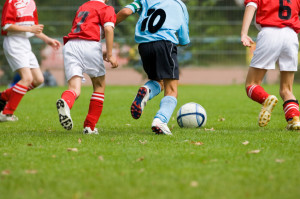Questions about fitness training pop up almost every day in our clinic. Patients need to know: Are they training too hard? Too little? How do they find their limits? And— most urgently— how soon and how hard can they resume training after an injury?
Like all good questions, there is one reliable answer: That depends.

Each sport or activity works certain structures harder than others. Consequently, injuries often occur in those muscles (or ligaments, tendons, joints or bones) that are subject to the most stress.
That is one reason why many sports specialists advise cross-training. If your preferred sport is cycling, add in a day each week for tennis to work the upper body. If you like to run, alternate with swimming to impose less stress on the hamstrings and knees. If you are a gym rat, mix up your free-weight workout with a treadmill for an aerobic benefit.
This type of variety works different parts of the body and reduces the chance of injury. It also helps prevent burn-out— a syndrome that can affect even the most gung-ho athlete. And if you do get injured, you will have some fallback exercises to help you stay in shape while you heal.
Three Cardinal Components of Fitness Training
All fitness programs have some combination of the three major benefits: aerobic, strength and flexibility.
Examples of aerobic exercises include skating, running and stair-climbing machines. Strength fitness training includes weight-lifting and floor exercises such as push-ups. These develop muscle tone and increase bone density. Flexibility exercises— which some tend to neglect— include yoga and some types of dance.
An old canard about fitness training— which hasn’t been discredited, although it should be tailored to the individual— is that training intervals should be increased by about 10 percent per week. It may be that you can increase it a bit more during the early weeks, especially if the activity is relatively gentle. If you are an elite athlete, you don’t need to increase the time as much as change the nature or intensity of the workout.

Elderly people can benefit from exercises that improve balance, coordination and endurance such as yoga, swimming or walking. Amateurs are encouraged to do something physical for at least 30 minutes per day; it could be housework or gardening. Elite athletes may actually need to be reined in a bit; they tend to overdo it.
If you are new to a sport or exercise regimen, it’s a good idea to consult a trainer or pro. Not only can you avoid damage caused by misuse of equipment or poor technique, but you will benefit much more in the long run from a little expert guidance.
If you have a chronic condition such as asthma or diabetes, if you smoke or are a first-time exerciser, it’s best to get a physical exam. Call our clinic and tell the receptionist you plan to begin a new exercise program and you’d like an appointment with the staff before you start.
Returning to your Favorite Sport or Activity
What about fitness training after an injury. How soon can you return to your favorite sport or activity?
Again, it depends on your injury and your fitness level— before the injury and since. If you are cross-training, you have probably maintained good conditioning. Plus you may be able to continue practicing your alternate work-outs while the injury heals.
For example, if you are a runner with an ACL injury, continue lifting weights at the gym or swimming. If you have a shoulder injury, you may need to modify your technique at the gym and increase your running regimen temporarily.
Four factors to keep in mind when judging whether you are ready to return to action. Wait until you…
- Have no pain at the injured site;
- the swelling has gone down;
- you have full strength in the injured part;
- you can rest your weight on the lower body or perform a throwing motion in the upper body;
- you have full range of motion in your shoulder/elbow/hip/knee or other affected body part.











